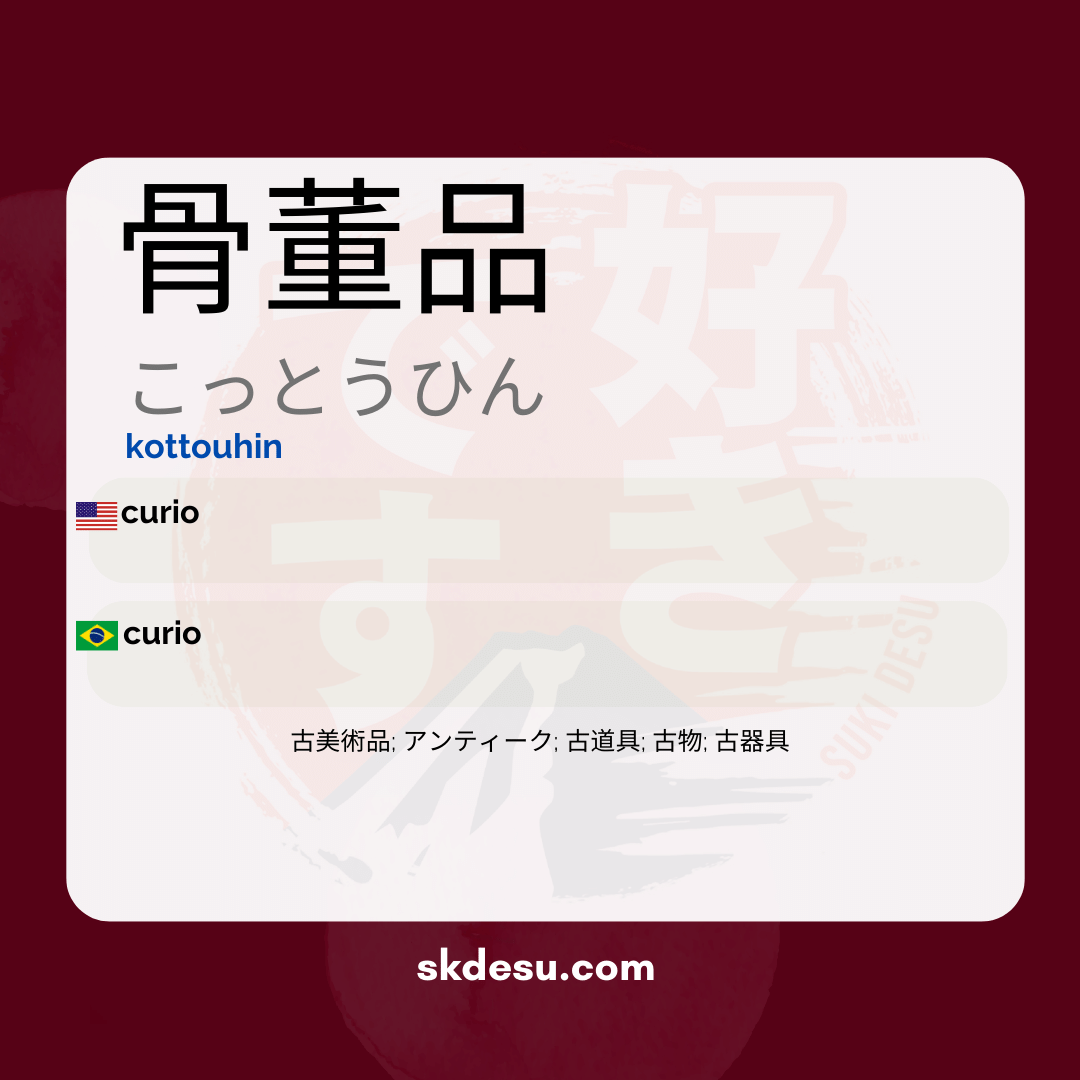Translation and Meaning of: 骨董品 - kottouhin
If you've come across the Japanese word 骨董品[こっとうひん] and are curious about its meaning, you're in the right place. This article will explore everything from its translation and origin to the cultural usage of this expression in Japan. Whether for Japanese language students or simply enthusiasts of Japanese culture, understanding terms like this can open doors to a deeper understanding of the language and Japanese values.
Antiques is one of those words that carries a significant historical and cultural weight. Throughout this text, we will uncover how it is used in everyday life, its frequency in the language, and even tips for memorizing it effectively. If you're looking for reliable and practical information about this term, keep reading.
Meaning and Translation of 骨董品
The word 骨董品[こっとうひん] can be translated as "antique" or "old object." It refers to collectible items, often valuable due to their age, rarity, or historical significance. In Japan, this term is widely associated with artworks, ceramics, furniture, and other artifacts that have stood the test of time.
It is worth noting that 骨董品 is not limited to Japanese objects. The word can be used to describe antiques of any origin, as long as they meet the criteria of historical or artistic value. This universal aspect of the term makes it especially useful in conversations about collecting and cultural heritage.
Origin and Cultural Context
The etymology of 骨董品 is fascinating. The kanjis that make up the word literally mean "bone" (骨), "old" (董), and "object" (品). Together, they convey the idea of something that has withstood the passage of time, like a bone that remains after the body's decomposition. This poetic image well reflects the value that Japanese culture places on preserving history.
In the Japanese social context, 骨董品 is closely linked to the concept of "mottainai" - the aversion to waste and respect for objects. This philosophy helps explain why the antiques market thrives in Japan, with specialized shops and even TV programs dedicated to the evaluation of old pieces. The act of preserving and valuing the past is seen as a virtue in Japanese society.
Tips for Memorizing and Using Correctly
For those studying Japanese, memorizing 骨董品 can seem challenging due to the three uncommon kanji. An effective strategy is to associate each character with its concrete meaning: imagine a "bone" (骨) of an "elder" (董) kept as a "valuable object" (品). This visual narrative helps to firmly establish not only the writing but also the concept behind the word.
Regarding practical use, 骨董品 often appears in contexts such as: "This store sells 骨董品" or "My grandfather collects 骨董品." It is important to note that the term has a formal and respectful tone, suitable for describing genuinely old objects. For old items that do not have historical value, the Japanese often use other expressions like 古物 (furutsu).
Vocabulary
Expand your vocabulary with related words:
Synonyms and similar words
- 古美術品 (こびじゅつひん) - Artistic Antiques
- アンティーク (あんてぃーく) - Antiques in general
- 古道具 (こどうぐ) - Old tools or utensils
- 古物 (こぶつ) - Antique objects, usually without a specified category
- 古器具 (こきぐ) - Old equipment or utensils, focusing on utensils
Related words
Romaji: kottouhin
Kana: こっとうひん
Type: noun
L: jlpt-n1
Translation / Meaning: curiosity
Meaning in English: curio
Definition: Arts and crafts of ancient value.
Quick Access
- Vocabulary
- Writing
- Sentences
How to Write in Japanese - (骨董品) kottouhin
See below a step-by-step guide on how to write the word by hand in Japanese. (骨董品) kottouhin:
Example Sentences - (骨董品) kottouhin
See below some example sentences:
Nenhum resultado encontrado.
Other Words of this Type: noun
See other words from our dictionary that are also: noun

